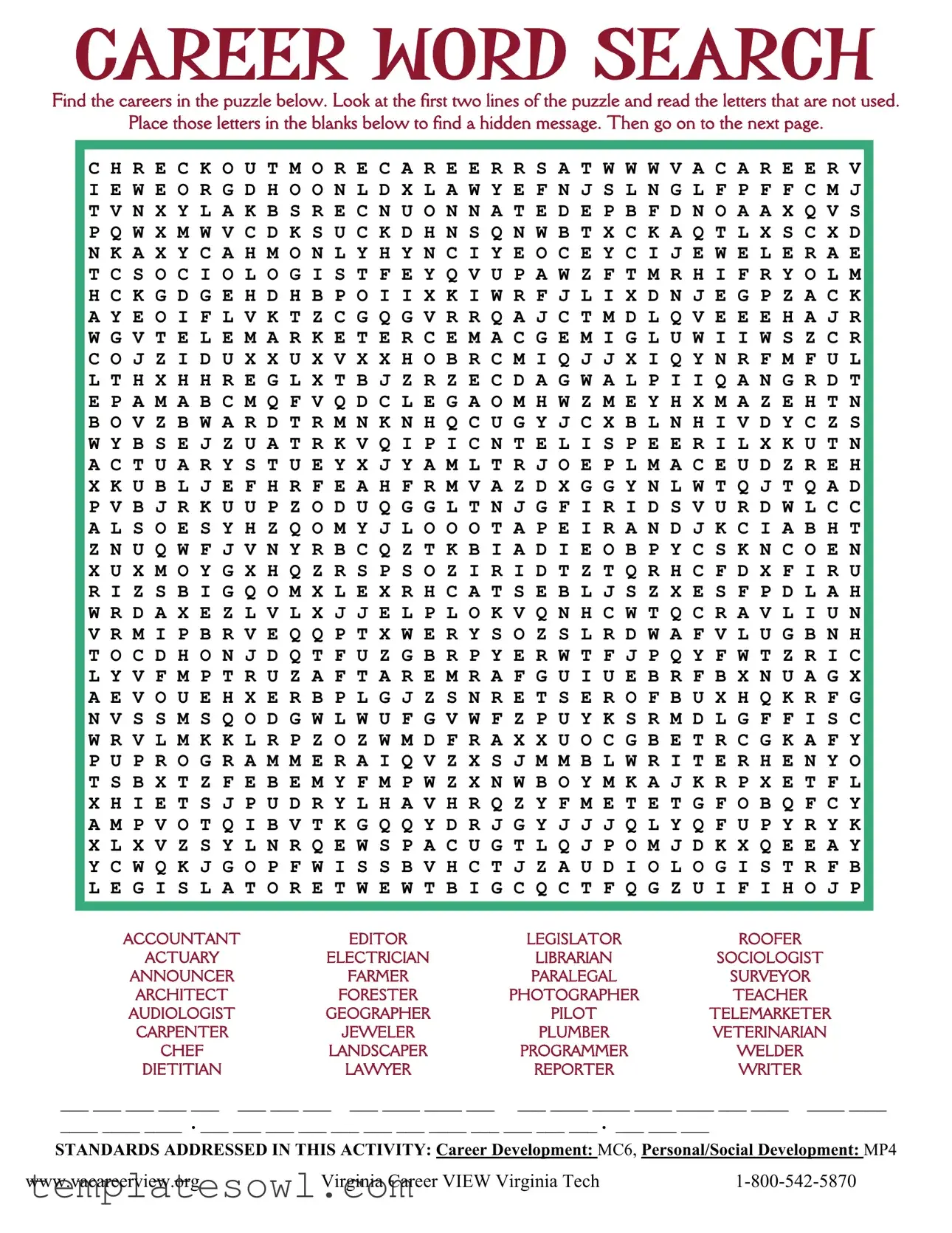When engaging with the Career Word Search form, individuals often make several common mistakes that can hinder their progress. One of the most frequent errors is overlooking the instructions. These instructions guide users on how to find the hidden message from the unused letters in the puzzle. Taking a moment to read them carefully can save time and frustration.
Another mistake is failing to double-check the proper spelling of occupations. In the puzzle, various careers may contain similar letters but differ in spelling. Misreading an occupation can lead to incorrect answers. It is crucial for users to pay close attention to the letters presented and ensure that they match correctly with what is listed in the form.
Additionally, neglecting to write down the unused letters can be detrimental. Users often skip this step entirely, which ultimately prevents them from uncovering the hidden message. This task is essential, as it forms the foundation for the overall exercise. A systematic approach, such as taking notes, can facilitate better outcomes.
Individuals sometimes misunderstand the purpose of the blanks at the end of the form. These blanks are not merely for decoration; they are intended for the letters extracted from the word search. Users should fill these out thoughtfully, as they directly relate to the hidden message. Not recognizing this can lead to omitted details and an incomplete task.
Another error occurs when participants rush through the word search itself. While it's tempting to quickly circle the words, taking time to clearly identify each career can improve accuracy. By being thorough, users can avoid common pitfalls related to incorrectly identified occupations.
Moreover, some may find it challenging to categorize the occupations into the designated clusters on the second page. Mistakes can arise from a lack of understanding of which career fits into which category. Familiarity with the various professions can aid in accurately completing this section of the form.
Additionally, reliance on memory without cross-referencing the list of careers can lead to confusion. Many occupations sound similar or may share initials, making it easy to mix them up. Users should reference the provided list regularly to help guide their selections and ensure accuracy.
People also tend to overlook the importance of the career clusters themselves. These clusters not only provide organization to the exercise but also facilitate insight into various fields. Understanding the clustering can impact one’s ability to navigate their potential career paths more effectively.
Finally, neglecting to seek clarification when confused is another common mistake. If a user encounters a challenge or a question about the task, reaching out for assistance can enhance understanding and ensure a complete grasp of the material. Communication can be invaluable in resolving uncertainties.
By acknowledging and avoiding these mistakes, users can navigate the Career Word Search form more effectively. With focus and attention to detail, the exercise can become an engaging and informative experience.


